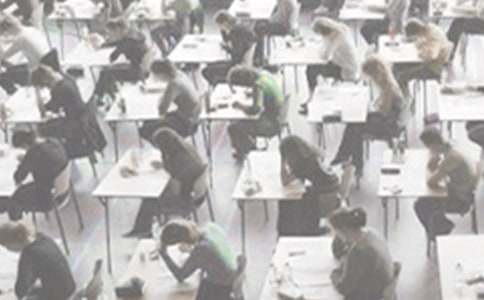英語(yǔ)六級(jí)考試閱讀專項(xiàng)訓(xùn)練題及答案
When we think of Hollywood—a term I use loosely to describe American movie production in general, not simply films made in Los Angeles—we think of films aimed at amusing audiences and making money for producers.

During the early years of the new century, as workers won their demands for higher wages and a shorter working week, leisure assumed an increasingly important role in everyday life. Amusement parks, professional baseball games, nickelodeons ((美)門票一律5分的“無(wú)分戲院“(電影院)), and dance halls attracted a wide array of men and women anxious to spend their hard earned dollars in the pursuit of fun and relaxation. Yet of all these new cultural endeavors, films were the most important and widely attended source of amusement. For a mere five or ten cents, even the poorest worker could afford to take himself and his family to the local ickelodeon or storefront theatre. Taking root in urban working-class and immigrant neighborhoods, cinemas soon spread to middle-class districts of cities and into small communities throughout the nation. "Every little town that has never been able to afford and maintain an opera house," observed one journalist in 1908, "now boasts one or two Bijou Dreams. " By 1910 the appeal of films was so great that nearly one-third of the nation flocked to the cinema each week; ten years later, weekly attendance equaled 50 percent of the nation's population.
Early films were primarily aimed at entertaining audiences, but entertainment did not always come in the form of escapist fantasies. Many other issues were also portrayed on the screen. "Between 1900 and 1917," observes Kevin Brownlow, "literally thousands of films dealt with the most pressing problems of the day—white slavery, political corruption, gangsterism, loansharking, slum landlords, capital vs. labor, racial prejudice, etc. " While most of these films were produced by studios and independent companies, a significant number were made by what we might call today "special interest groups". As films quickly emerged as the nation's most popular form of mass entertainment, they attracted the attention of a wide range of organizations, which recognized the medium's enormous potential for disseminating propaganda to millions of viewers.
26. Hollywood may not be used to describe_______.
A. American movie production in general
B. films nfade in Los Angeles
C. an area in Los Angeles, famous because many popular films have been produced there
D. films aimed at amusing audiences and making money for them
27. It may be inferred from the passage that _______.
A. most of the film-goers were working people
B. films were more interesting than professional baseball games
C. people were eager to spend their money on amusement and relaxation
D. films were the most important and widely enjoyed amusement
28. "Bijou Dreams" in the 2nd paragraph probably refers to_______.
A. opera houses B. amusement parks
C. cinemas D. small and pretty places
29. It can be concluded from the last paragraph that_______.
A. many of the social and political problems were reflected on the screen of the films
B. films often dealt with the most important problems of the day
C. films quickly became a very popular form of entertainment
D. because of the large attendance, films had a great influence on a large number of people
30. The passage is about_______.
A. the term—Hollywood B. American movie production
C. the history and function of the film D. the early films
參考答案
26. D 27. A 28. C 29. D 30. C
【英語(yǔ)六級(jí)考試閱讀專項(xiàng)訓(xùn)練題及答案】相關(guān)文章:
看京劇閱讀題訓(xùn)練及答案02-08
成人高考民法專項(xiàng)訓(xùn)練題及答案01-28
成人高考教育理論專項(xiàng)訓(xùn)練題及答案01-30
《水仙》閱讀訓(xùn)練及答案03-04
2017年成人高考英語(yǔ)閱讀理解專項(xiàng)鞏固訓(xùn)練題及答案01-31
爆米花閱讀題及答案12-03
鳳蝶閱讀題及答案03-29
《過(guò)年》閱讀題及答案03-29
《轉(zhuǎn)身》閱讀題及答案03-23
霧閱讀題及答案03-11
